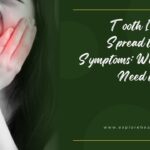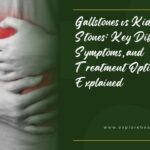Introduction: Acid vs Shrooms – Understanding Two of the Most Common Psychedelics
The psychedelic landscape in the United States is changing. With growing public interest, scientific research, and policy reform, many Americans are exploring the differences between acid (LSD) and shrooms (psilocybin mushrooms). These substances, once considered strictly counterculture, are now being reevaluated for their therapeutic potential and safety profiles.
But for those curious or new to psychedelics, the question remains: acid vs shrooms—what’s the real difference?
This article takes a deep dive into both substances, covering their origins, effects, risks, legality, and current U.S. trends as of 2025. Whether you’re exploring for personal knowledge, mental health insights, or harm reduction, understanding how acid and shrooms differ is essential.
What Is Acid?
LSD Explained
Acid is the street name for lysergic acid diethylamide (LSD), a synthetic hallucinogen first synthesized in 1938. LSD is derived from ergot, a fungus that grows on rye, and is known for its profound impact on perception, mood, and cognition.
Common Effects of Acid
- Visual distortions (geometric patterns, enhanced colors)
- Time distortion
- Heightened introspection
- Euphoria or anxiety
- Synesthesia (seeing sounds, hearing colors)
- Ego dissolution (a loss of self-identity)
The effects of LSD typically begin within 30–60 minutes, peaking around 2–4 hours, and lasting up to 12 hours.
What Are Shrooms?
Psilocybin Mushrooms 101
Shrooms refer to fungi that contain the naturally occurring psychedelic compound psilocybin, which the body converts into psilocin—the substance responsible for the psychedelic effects.
Over 180 mushroom species contain psilocybin. The most well-known in the U.S. is Psilocybe cubensis.
Common Effects of Shrooms
- Visual and auditory hallucinations
- Altered perception of time and space
- Emotional amplification
- Spiritual or mystical experiences
- Nausea (common during the onset)
Shrooms typically take effect within 30–90 minutes, with effects lasting 4–6 hours, although some residual effects can persist longer.
Acid vs Shrooms – Key Differences at a Glance
| Feature | Acid (LSD) | Shrooms (Psilocybin) |
| Source | Synthetic | Natural (mushrooms) |
| Duration | 8–12 hours | 4–6 hours |
| Potency | Micrograms (extremely potent) | Milligrams (less potent by weight) |
| Onset | 30–60 minutes | 30–90 minutes |
| Emotional Experience | Often analytical or energetic | Often spiritual or emotional |
| Visual Hallucinations | Intense and geometric | Organic and flowing |
| Legality (U.S. 2025) | Schedule I (illegal) | Decriminalized in some states/cities |
| Therapeutic Research | Ongoing studies | Strong support for mental health use |
Current U.S. Trends in Psychedelic Use (2024–2025)
Decriminalization and Legal Shifts
In 2025, psychedelic policy in the U.S. continues to evolve:
- Oregon has legalized psilocybin therapy under medical supervision through Measure 109.
- Colorado passed a law to regulate psilocybin and other plant-based entheogens.
- California, Washington D.C., and Massachusetts have decriminalized psilocybin at the city level.
LSD, however, remains classified as a Schedule I substance under the Controlled Substances Act, meaning it’s illegal to manufacture, possess, or distribute under federal law.
You can read more about current legal status at DEA.gov and the Multidisciplinary Association for Psychedelic Studies (MAPS).
Rising Interest in Psychedelic Therapy
According to a 2024 report by the American Psychological Association, nearly 1 in 4 U.S. adults support the therapeutic use of psychedelics for conditions like:
- Depression
- PTSD
- Anxiety
- Addiction
Major clinical trials, including work by Johns Hopkins Center for Psychedelic Research, show promising results for psilocybin-assisted therapy.
Acid vs Shrooms – Which Is Safer?
Physical Risks
Both LSD and psilocybin are considered physiologically safe at standard doses. Neither is known to cause organ toxicity or fatal overdose on their own.
However, they can amplify underlying mental health issues, and in rare cases may trigger:
- Panic attacks
- Psychosis
- Persistent perceptual changes (e.g., HPPD)
Shrooms may cause more physical discomfort (nausea, stomach cramps), while LSD’s longer duration may increase the risk of psychological distress if the trip goes poorly.
Psychological Risks
Both substances can produce challenging experiences, especially in high doses or unsafe settings. The term “bad trip” refers to anxiety, paranoia, or dysphoria during a psychedelic experience.
Risk factors include:
- Personal or family history of schizophrenia or bipolar disorder
- Lack of support or safe environment
- Mixing with other drugs or alcohol
Always use with caution, preferably in the presence of a sober guide or trained facilitator.
Can You Mix Acid and Shrooms?
Some users combine them—an experience sometimes called “candy flipping” (usually refers to LSD + MDMA) or “hippie flipping” (LSD + psilocybin). However, this is not recommended due to:
- Increased risk of overwhelming psychological effects
- Difficulty managing duration and intensity
- Greater unpredictability of effects
Even experienced users are advised against combining powerful psychedelics without professional guidance.
Therapeutic Potential – Which One Wins?
Shrooms in Mental Health Research
- Psilocybin is in Phase 3 clinical trials for treatment-resistant depression and has received Breakthrough Therapy designation from the FDA.
- Research suggests that a single high-dose psilocybin session can reduce depression and anxiety for up to 6 months.
Read more about clinical research from ClinicalTrials.gov.
LSD’s Therapeutic Role
LSD has also shown promise in:
- End-of-life anxiety
- Cluster headaches
- Creativity enhancement
- Addiction therapy (especially alcohol)
However, less funding and public support mean fewer clinical studies than psilocybin.
Choosing Between Acid vs Shrooms – Which One Is Right for You?
Ask Yourself:
- Do I want a shorter or longer experience?
- Choose shrooms for shorter duration.
- Choose shrooms for shorter duration.
- Am I looking for introspection or high energy?
- Shrooms may feel more spiritual or emotional.
- Acid may be more cerebral or stimulating.
- Shrooms may feel more spiritual or emotional.
- What’s legally and culturally supported in my area?
- Shrooms may be decriminalized locally; LSD remains illegal everywhere in the U.S.
- Shrooms may be decriminalized locally; LSD remains illegal everywhere in the U.S.
Harm Reduction Tips
- Start low, go slow. Begin with a small dose to gauge effects.
- Test substances. Use reagent kits to verify purity (available online).
- Have a trip sitter. Especially if it’s your first time.
- Avoid mixing with alcohol or stimulants.
- Stay hydrated, but don’t overdo water.
- Create a safe, comfortable setting.
For harm reduction info, visit DanceSafe.org or the Zendo Project, which support safe psychedelic experiences.
Conclusion: Acid vs Shrooms – Two Roads to Consciousness
Both acid and shrooms offer unique windows into consciousness, creativity, and healing. While their effects overlap, they differ in duration, intensity, and legal status. If you’re curious about psychedelic experiences or exploring alternative mental health paths, it’s crucial to stay informed, stay safe, and respect the power of these substances.
Still wondering about acid vs shrooms? Educate yourself further through science-backed sources, connect with supportive communities, and consider your mental health goals before choosing either path. The psychedelic future is unfolding—make sure you walk it with intention.
For more research-based health articles, visit ExploreHealthToday.com, your trusted guide for wellness in 2025 and beyond.
About ExploreHealthToday.com
ExploreHealthToday.com was created to be a one-stop resource where readers can find up-to-date, well-researched articles on a variety of health topics. From nutrition and wellness to lifestyle and mental health, we strive to provide reliable information to help you make informed decisions about your well-being.
We believe that good health starts with good information, and our mission is to empower our readers with knowledge they can trust.
Visit us at ExploreHealthToday.com to learn more.





